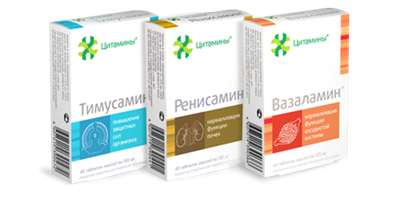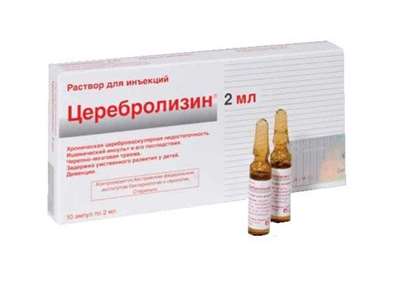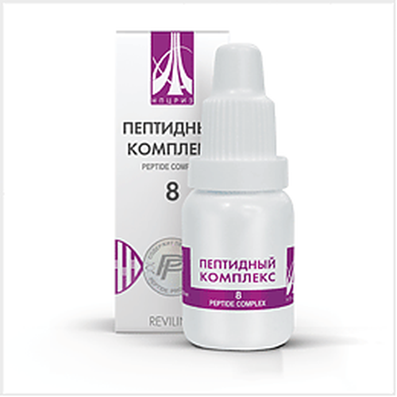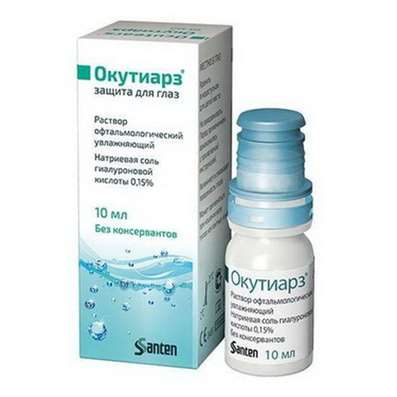Instruction for use: Simvastatin 20mg
I want this, give me price
International Nonproprietary Name (INN): Simvastatin
Pharmaceutic group: Hypocholesterolemic
Presentation:
Film-coated tablets 10 mg ¹30;
Film-coated tablets 20 mg ¹30.
Available with prescription
Indications for Simvastatin
Simvastatin is a hypolipidemic drug used to control elevated cholesterol, or hypercholesterolemia. It is a member of the statin class of pharmaceuticals.
Simvastatin is a synthetic derivate of a fermentation product of Aspergillus terreus.
MEDICAL USES. The primary uses of simvastatin is for the treatment of dyslipidemia and the prevention of cardiovascular disease. It is recommended to be used only after other measures such as diet, exercise, and weight reduction have not improved cholesterol levels sufficiently.
Since its introduction, there has been a large debate surrounding the price for lipid-lowering treatment and its benefits with regard to atherosclerosis. Although this has affected the other statins, simvastatin was the first statin drug to be used extensively in clinical practice.
A number of large epidemiological studies were conducted to discover which patients would benefit most from statin drugs; most studies involve simvastatin as the study drug. The most influential studies were the Scandinavian Simvastatin Survival Study (4S) and the Heart protection study (HPS).
It has been suggested that patients with one or more risk factors for cardiovascular disease (such as diabetes mellitus, hypertension or a positive family history) can benefit from statins even if they do not have substantially elevated cholesterol levels.
Simvastatin was introduced in the late 1980s, and in many countries it is now available as a generic preparation. This has led to a decrease of the price of most statin drugs, and a reappraisal of the health economics of preventive statin treatment. In the UK in 2008 the typical per patient cost to the NHS of simvastatin was approx £1.50 per month.
DOSE. Simvastatin is a powerful lipid-lowering drug that can decrease low density lipoprotein (LDL) levels by up to 50%. It is used in doses of 5 mg up to 80 mg. Higher doses (160 mg) have been found to be too toxic, while giving only minimal benefit in terms of lipid lowering.
In secondary prevention, 80 mg per day reduced major cardiovascular events by an absolute rate of 1.2% compared to 20 mg per day in a randomized controlled trial.
The drug is in the form of an inactive lactone that is hydrolyzed after ingestion to produce the active agent. It is a white, nonhygroscopic, crystalline powder that is practically insoluble in water, and freely soluble in chloroform, methanol and ethanol.
Grapefruit contains furanocoumarins, notably bergamottin and 6',7'-dihydroxybergamottin, which inhibit the intestinal cytochrome P450 3A4 isoform. This in turn slows metabolization of simvastatin and a large number of other drugs resulting in higher plasma levels of the drug. Due to the risk of toxicity patients taking simvastatin should avoid intake of grapefruit and grapefruit-containing products.
Trade name of the drug – Simvastatin
Dosage Form: tablets
Active substance:
Simvastatin - 10 mg or 20 mg;
excipients: microcrystalline cellulose - 70,00 / 140,00 mg of lactose monohydrate (milk sugar) - 21.00 / 42.00 mg pregelatinized starch (starch 1500) - 33.73 / 67.46 mg, colloidal silicon dioxide (aerosil) - 0.75 / 1.50 mg, ascorbic acid - 2.50 / 5.00 mg, butylhydroxyanisole - 0.02 / 0.04 mg, stearic acid - 1.25 / 2.50 mg of magnesium stearate - 0.75 / 1.50 mg of polyvinyl alcohol - 2.33 / 4.66 mg macrogol (polyethylene glycol) - 1.18 / 2.36 mg iron oxide black dye - 0.02 / 0.04 mg talc - 0.86 / 1.72 mg iron oxide yellow dye - 0.28 / 0.56 mg iron oxide red dye - 0.19 / 0.38 mg titanium dioxide - 0.97 / 1.94 mg .
Description:
round biconvex tablets, film-coated brown to light tan with a pinkish tint
Pharmacotherapeutic group: Hypocholesterolemic
ATX code: C10AA01
Pharmacological Properties of Simvastatin
Pharmacodynamics
Hypolipidemic agent derived synthetically from a fermentation product Aspergillus terreus, is an inactive lactone, is hydrolyzed in the body to form the hydroxy-acid derivative. Active metabolite inhibits 3-hydroxy-3-methyl-glutaryl-CoA reductase (HMG-CoA reductase), an enzyme that catalyzes the initial reaction of mevalonate HMG-CoA. Since the conversion of HMG-CoA to mevalonate is an early step in cholesterol synthesis, the use of simvastatin does not cause accumulation in the body is potentially toxic sterols. HMG-CoA is easily metabolized to acetyl-CoA, which is involved in many processes of synthesis in the body.
Causes a decrease in plasma triglycerides (TG), low density lipoprotein (LDL), very low density lipoproteins (VLDL) and total cholesterol (in cases of heterozygous familial and non-familial forms of hypercholesterolemia, with mixed hyperlipidemia, when cholesterol increased content is a risk factor) .
It increases the content of high density lipoprotein (HDL) cholesterol and decreases the ratio of LDL / HDL and total cholesterol / HDL ratio.
Home displays the effect - in 2 weeks from the start of the reception, the maximum therapeutic effect is reached after 4-6 weeks. Action is maintained with continued treatment, at the termination of therapy cholesterol gradually returned to baseline.
Pharmacokinetics
Absorption Simvastatin is high. After oral administration the maximum plasma concentration is reached after about 1,3-2,4 hours, and reduced by 90% after 12 hours. Communication to plasma proteins is approximately 95%.
It is metabolized in the liver, it has the effect of "first pass" through the liver (hydrolyzed to form an active derivative: beta-hydroxyacids are found and other active and inactive metabolites). The half-life of the active metabolites is 1.9 hours.
Derived mainly from the feces (60%) in the form of metabolites. Approximately 10-15% is excreted by the kidneys in an inactive form.
Indications for Simvastatin
hypercholesterolemia:
Primary hypercholesterolemia (IIa and type IIb) when poor diet low in cholesterol and other non-drug interventions (exercise and weight reduction) in patients with an increased risk of coronary atherosclerosis;
The combined hypercholesterolemia and hypertriglyceridemia, is not correctable special diet and exercise.
Cardiac ischemia:
for prevention of myocardial infarction, for reducing the risk of death, reducing the risk of cardiovascular disorders (stroke or transient ischemic attacks), slowing the progression of coronary atherosclerosis, reduce the risk of revascularization procedures.
Contraindications for Simvastatin
Hypersensitivity to simvastatin or to other components of the preparation (including hereditary lactose intolerance), as well as several other statin drugs (HMG-CoA reductase) in history;
Liver disease in the active phase, a persistent increase in activity of "liver" enzymes of unknown etiology;
Diseases of the skeletal muscles (myopathy);
Age 18 years (effectiveness and safety have been established).
Be wary appoint patients who abuse alcohol, transplant patients undergoing immunosuppressive therapy (due to an increased risk of rhabdomyolysis and renal failure); in conditions that can lead to severe renal insufficiency, such as hypotension, acute infectious diseases heavy currents expressed metabolic and endocrine disorders, disorders of water and electrolyte balance, surgery (including dental), or injury; patients with low or high tone of the skeletal muscles of unknown etiology; epilepsy.
Pregnancy and lactation
Simvastatin can have adverse effects on the fetus and is contraindicated in pregnant women. There are several reports of malformations in newborns whose mothers took simvastatin.
Women of childbearing age who take simvastatin should avoid conception. The use of simvastatin is not recommended in women of childbearing age, not using contraception. If during treatment pregnancy yet occurred, simvastatin should be discontinued, and the woman should be advised of the potential hazard to the fetus.
Data on the allocation of simvastatin in breast milk are not available. If necessary, simvastatin appointment during lactation should be borne in mind that many drugs are excreted in breast milk, and there is a threat of severe reactions, so breast-feeding during treatment is not recommended.
Simvastatin Dosage and Administration
Prior to treatment with simvastatin should be assigned to the patient a standard hypolipidemic diet, which should be respected during the entire course of treatment.
Simvastatin should be taken orally once a day 1 night, drinking plenty of water.
Time of the drug should not be linked with the meal.
The recommended dose of simvastatin for treating hypercholesterolemia varies from 10 to 80 mg 1 time per day in the evening. The recommended starting dose for patients with hypercholesterolemia is 10 mg. The maximum daily dose - 80 mg.
Changes (selection) the dose should be performed at intervals of 4 weeks. In most patients, the optimal effect is achieved by taking the drug at doses up to 20 mg per day.
In patients with homozygous familial hypercholesterolemia recommended daily dose of simvastatin 40 mg 1 time per day in the evening or 80 mg in three divided doses (20 mg in the morning, afternoon, and 20 mg to 40 mg in the evening).
In the treatment of patients with coronary heart disease (CHD) or at high risk for CHD effective doses of simvastatin are 20-40 mg per day. Therefore, the recommended initial dose in these patients - 20 mg per day. Change (selection) of the dose should be performed at intervals of 4 weeks, if necessary dose can be increased to 40 mg per day. If the LDL content of less than 75 mg / dl (1.94 mmol / l), total cholesterol - less than 140 mg / dl (3.6 mmol / L), the dose should be reduced.
In elderly patients and in patients with mild or moderate degrees of renal insufficiency dosage changes of the drug is needed.
In patients with chronic renal failure (creatinine clearance less than 30 mL / min) or receiving cyclosporin, danazol, gemfibrozil or other fibrates (except fenofibrate), nicotinic acid as lipid-lowering doses (≥ 1g / day) in combination with simvastatin, the maximum recommended dose simvastatin should not exceed 10 mg per day.
For patients taking amiodarone or verapamil with simvastatin at the same time, the daily dose should not exceed 20 mg.
Side effect ofSimvastatin
From the digestive system: abdominal pain, constipation, flatulence, nausea, diarrhea, pancreatitis, vomiting, hepatitis, increased activity of "liver" enzymes, alkaline phosphokinase, and creatine phosphokinase (CPK).
From the nervous system and sensory organs: asthenic syndrome, headache, dizziness, insomnia, muscle cramps, paresthesia, peripheral neuropathy, blurred vision, taste disturbance.
From the musculoskeletal system: myopathy, myalgia, muscle cramps, weakness; rarely - rhabdomyolysis.
Allergic and immunopathological reactions: angioedema, polymyalgia rheumatica, vasculitis, thrombocytopenia, increased erythrocyte sedimentation rate, fever, arthritis, rash, photosensitivity, skin redness, flushing, shortness of breath, lupus-like syndrome, eosinophilia.
Dermatological reactions: rare skin rash, pruritus, alopecia, dermatomyositis.
Other: anemia, palpitation, acute renal failure (due to rhabdomyolysis), reduced potency.
overdose
None of the few known cases of overdose (maximum dose of 450 mg adopted) specific symptoms have been identified.
Treatment: Induce vomiting, take activated charcoal, to spend symptomatic therapy. It is necessary to control the functions of the liver and kidneys, creatine kinase levels in the blood serum.
With the development of myopathy and rhabdomyolysis with acute renal failure (rare but severe side effects), stop taking the drug and the patient enter a diuretic and sodium bicarbonate (intravenous infusion). If you want to show hemodialysis.
Rhabdomyolysis can cause hyperkalemia, which can eliminate the intravenous administration of calcium chloride or calcium gluconate, glucose infusion with insulin using the potassium ion-exchange sorbents or, in severe cases, by dialysis.
Interaction
Cytotoxic agents, antifungal drugs (ketoconazole, itraconazole), fibrates, high doses of nicotinic acid, immunosuppressants, erythromycin, clarithromycin, telithromycin, HIV protease inhibitors, nefazodone increase the risk of myopathy.
Cyclosporine or Danazol: the risk of myopathy / rhabdomyolysis is increased by concomitant use of cyclosporine or danazol with higher doses of simvastatin.
Other lipid-lowering drugs that can cause myopathy development: the risk of myopathy is increased by concomitant use of other lipid-lowering drugs that are not potent inhibitors of CYP3A4, but can cause myopathy in monotherapy conditions. Such as gemfibrozil and other fibrates (except fenofibrate), and niacin dose ≥ 1 g per day.
Amiodarone and verapamil: the risk of myopathy is increased by coadministration of amiodarone or verapamil with higher doses of simvastatin.
Diltiazem: risk of myopathy increased slightly in patients receiving diltiazem simultaneously with simvastatin 80 mg.
Simvastatin potentiates the action of oral anticoagulants (eg phenprocoumon, warfarin) and increases the risk of bleeding, which requires the need for monitoring blood coagulation parameters prior to treatment, as well as quite often the initial treatment period. Once reached a stable level indicator prothrombin time or international normalized ratio (INR), a further control be carried out at intervals recommended for patients receiving anticoagulant therapy. If you change the dosage or discontinuation of simvastatin should also conduct monitoring of prothrombin time or INR on the above scheme.
Therapy with simvastatin did not cause changes in prothrombin time and bleeding risk in patients not taking anticoagulants.
It increases the level of digoxin in the blood plasma.
Cholestyramine and colestipol reduce bioavailability (perhaps through use of simvastatin 4 hours after administration of the drugs, while noting additive effect).
Grapefruit juice contains one or more components which inhibit CYP3A4 and can increase the concentration in the blood plasma means, metabolized by CYP3A4. Increased activity of HMG-CoA reductase inhibitor after consuming 250 ml juice per day is minimal and has no clinical significance. However, the consumption of a large volume of juice (more than 1 liter per day) while taking simvastatin significantly increases the level of inhibitory activity against HMG-CoA reductase inhibitor in blood plasma. In this connection, to avoid consumption of grapefruit juice in large quantities.
special instructions for Simvastatin
At the beginning of therapy with simvastatin possible transient increase in the level of "liver" enzymes.
Before therapy and more regular liver function tests (control activity "liver" enzymes every 6 weeks during the first 3 months., And then every 8 weeks for the remainder of the first year, followed by 1 every six months) and at higher doses It should be a test to determine the liver function. By increasing the dose to 80 mg of the test should be carried out every 3 months. When persistent elevations of transaminases (3 times as compared to baseline) receiving simvastatin should be discontinued.
Simvastatin, like other inhibitors of HMG-CoA reductase inhibitors, should not be used at an increased risk of rhabdomyolysis and renal failure (on the background of severe acute infection, hypotension, planned major surgery, trauma, severe metabolic disorders).
Cancel lipid-lowering drugs during pregnancy has no significant impact on the long-term treatment of primary hypercholesterolemia.
Patients with decreased function of the thyroid (hypothyroidism) or in the presence of certain renal diseases (nephritic syndrome) while increasing cholesterol levels must first conduct therapy of the underlying disease.
Simvastatin with caution appoint persons who abuse alcohol and / or have a history of liver disease.
Before and during treatment the patient should be on hypolipidemic diet.
Simultaneous administration of grapefruit juice may enhance the severity of side effects associated with taking simvastatin should be avoided simultaneous reception.
Simvastatin is not shown in the cases where there is hypertriglyceridemia I, IV and V types.
Treatment with simvastatin may cause myopathy, leading to rhabdomyolysis and renal failure. The risk of this disease increases in patients receiving simultaneously with simvastatin one or more of the following drugs: fibrates (gemfibrozil, fenofibrate), cyclosporine, nefazadon, macrolides (erythromycin, clarithromycin), antifungal agents of "azole" group (ketoconazole, itraconazole) and HIV protease inhibitors (ritonavir). The risk of myopathy is also increased in patients with severe renal insufficiency.
All patients who start therapy with simvastatin and patients who need to increase the dose of the drug should be warned of the possibility of myopathy and need immediate treatment to the doctor in case of unexplained pain, pain in the muscles, weakness or muscle weakness, particularly if accompanied by malaise or fever. Drug therapy should be discontinued immediately if myopathy is diagnosed or suspected.
In order to diagnose myopathy is recommended to conduct regular measurements of the CK.
In the treatment with simvastatin may increase the content of serum CK, which should be considered in the differential diagnosis of chest pain. Drug withdrawal criterion is an increase in serum CPK more than 10 times the upper limit of normal. Patients with myalgia, myasthenia and / or marked increase in CPK drug treatment is stopped.
The drug is effective as a monotherapy, or in combination with bile acid sequestrants.
In the case of the current dose skip the drug should be taken as soon as possible. If you come during the next dose, do not double the dose.
Patients with severe renal insufficiency treatment is carried out under the control of renal function.
The duration of the drug is determined by the physician individually.
Effects on driving ability and work with the mechanisms
The adverse effect of the drug on the ability to drive and work with the mechanisms have not been reported.
Release form of Simvastatin
Film-coated tablets 10 mg and 20 mg.
10 tablets in blisters of PVC film and aluminum foil printed patent.
1, 2, 3, 4 or 5 of cellular contour instruction packages in a pile of cardboard.
Storage conditions of Simvastatin
In a dry, dark place at a temperature no higher than 25 ° C.
Keep out of the reach of children.
Shelf life of Simvastatin
3 years.
Do not use beyond the expiration date printed on the package.
Conditions of supply of Simvastatinfrom pharmacies
With prescription.

 Cart
Cart





